Bells of Ireland, let’s dive on in! Plant Profiles dive deep on one plant variety. They are meant to provide you with enough information to make good growing decisions. A desire to grow gorgeous flowers is one thing. However, discerning if a particular plant is right for you and your climate is a whole other ballgame.
My intention here is to give you as much practical information to make these decisions. However, I’m going one step further and taking you completely behind the scenes to share exactly what has worked for us as well. For this reason, Plant Profiles are broken up into what I’m calling the “Nuts and Bolts (N&B)” and “Behind the Scenes (BTS).”
If you haven’t already, please be sure to read the FFY Introduction to learn more about how Plant Profiles are organized.
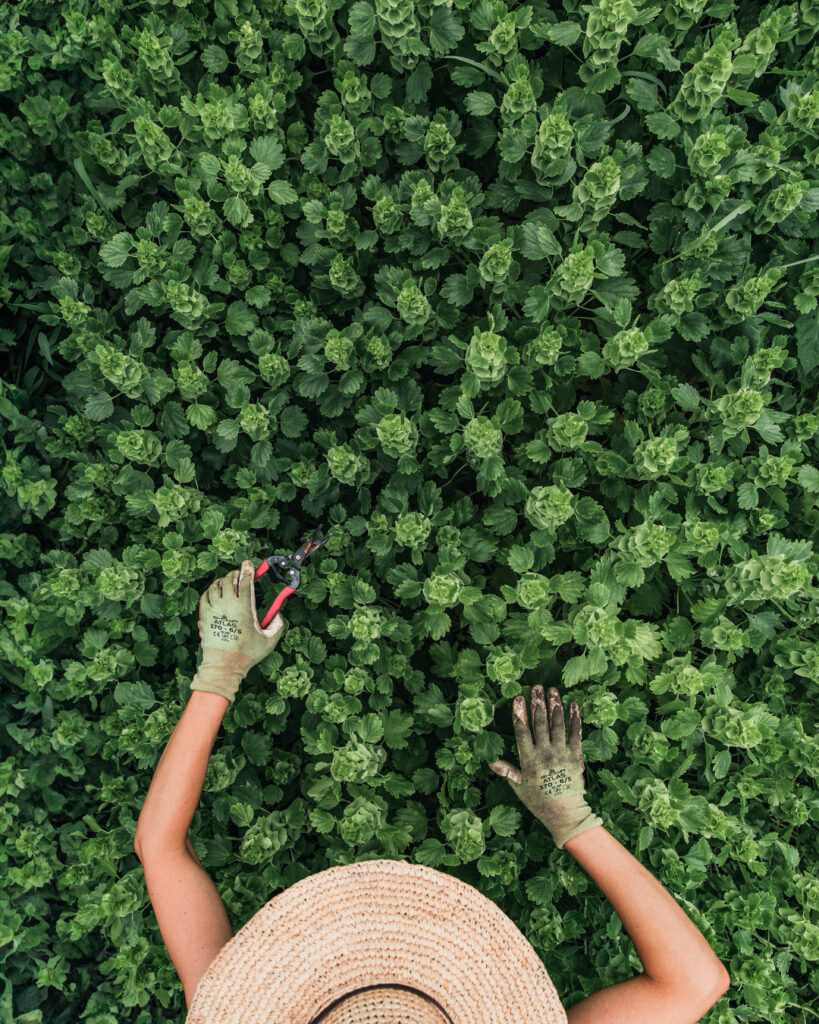
Primary Sources
The primary sources for the N&B portion come from:
- Postharvest Handling of Cut Flowers and Greens: A Practical Guide for Commercial Growers, Wholesalers & Retailers (Dole, Stamps, Carlson, et al).
- Specialty Cut Flowers, 2nd Edition, Revised & Enlarged (SCF): Industry standard for both new and experienced growers on the production of annuals, perennials, bulbs, and woody plants for fresh and dried cut flowers (Allan M. Amritage and Judy M. Laushman)
- Johnny’s Selected Seeds (Johnny’s): Johnny’s has been in the business for 50 years, with a research farm dedicated to finding the best seeds and tools for farmers and gardeners
- BOSTON Ornamental Terminal Prices. Specialty Crops Market News Federal – State Market News Service, USDA (as of 14-FEB-2023
- Bells of Ireland, Molucella laevis (Mahr). Wisconsin Horticulture, Division of Extension. University of Wisconsin–Madison
- The Cut Flower Handbook: Select, Plant, Grow, and Harvest Gorgeous Blooms (Ziegler & Graven)
Zone Considerations
- Johnny’s Selected Seeds research farm is located in Zone 5a Maine
- Lisa Mason Ziegler’s farm, The Gardener’s Workshop, is located in Zone 7a/8b Virginia
- My farm, Petal Back Farm, is located in Zone 4b Wisconsin
General Information: N&B
Latin Name: Moluccella laevis
Common Name: Bells of Ireland, Shellflower
Origin: Western Asia
Days to Maturity: 90–110 days
Life Cycle: Annual
Spacing: 6–12″
Height: 24–36″
Bells of Ireland is a cutting garden staple and a fabulous foliage (or spike flower) for market bouquets. In fact, it’s one of the best foliages you can grow because it produces loads of stems on multiple branched plants! Long stems are covered with bright apple-green, bell-shaped, 2″ calyxes centered with tiny, white blooms. They add a a lush green color and fresh, spring scent to mixed bouquets Some describe it as sour apple and others lime skittles, ha!
Despite it’s common name, Bells of Ireland is actually not from Ireland but is native to western Asia, and it has been cultivated since 1570! Even Linnaeus, who named the plant, was a bit confused about its origin, naming the genus after the Molucca Islands in Indonesia where it was mistakenly thought to be from. It’s supposed association with Ireland likely has more to do with the color and that the plant stands for good luck (UWM).
Bells of Ireland is in the mint family (Lamiaceae) and prefers cool weather (UWM). It can be somewhat tricky to germinate (yet self sow like crazy), but there are tricks to getting it right (see Propagation).
General Information: BTS
Bells of Ireland is one of the best spring foliages because it cranks out a bumper crop of stems in a small footprint. Their fresh scent, unusual bells, and pop of green add so much interest to mixed bouquets. My sister had them in her wedding flowers long before I ever even grew flowers and she loved them, so I knew I had to grow them! Her name is Molly, which is kinda funny (Molucella laevis is the Latin name). She came over this spring to pick up flowers for a colleague (she’s a midwife), and I had just cut a fresh batch of Bells of Ireland. We were trying to describe their scent and reminiscing over her wedding (which was I think 13 years ago). She’s my younger sister, which now makes me feel old LOL.
Bells of Ireland are prolific, easy to grow, and pest resistant. Deer seem to completely leave them alone, so consider them if your deer pressure is high. They can be used fresh but also dried. They do have spiky thorns underneath the calyxes, so be careful when cutting!
What I love most about Bells of Ireland as a cut flower:
- Easy to grow
- Add interest to bouquets
- Fun, fresh scent
- Popular with customers
- Extremely prolific
- Pest/deer resistant
- Excellent vase life
But every rose has its thorn, right? Potential shortcomings:
- Kinda thorny
- Can be hard to germinate (tricks below)
- Can sometimes succumb to disease
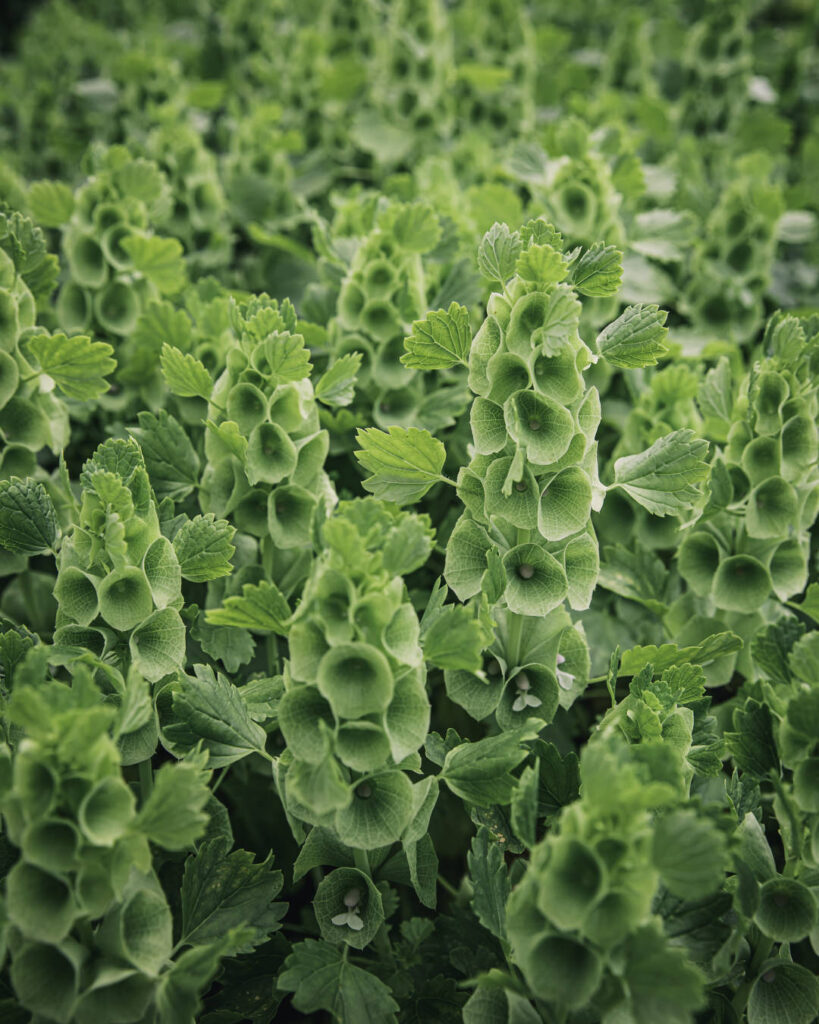
Propagation: N&B
Johnny’s recommends direct sowing in early spring when soil is 50–60F (10–16C). Do not cover seed as light is required for germination. Ziegler recommends direct sowing in the fall if your winters allow for it. Germination may be slow (up to a month). To speed up germination, chill the seeds for two weeks (seal the sown seeds in a plastic bag and place in a refrigerator) first (UWM).
If transplanting, Johnny’s recommends sowing 6–8 weeks before planting out in individual 3″ containers or cell packs, as plants have taproots and do not transplant well. Bottom water or mist to avoid covering seed with displaced soil. Harden off and transplant outside after the danger of frost has passed.
Another option is getting plugs from Farmer Bailey, which are always high quality!
Propagation: BTS
I don’t direct sow our Bells of Ireland, but they are generous self seeders in our high tunnel LOL. To get decent germ rates, we keep our Bells of Ireland in the freezer (they like the cool period). Most folks recommend at least a few weeks, but we just store our seeds there. Then, I use the wet paper towel method. I soak paper towels, ring them out, and then sandwich the seeds between the paper towels. I place it in a plastic baggy and put the baggy under grow lights (we grow many other seedlings, so there’s always space). Once germinated, I place in 72-cell trays. I’ve never had any issues transplanting them. I’ve also grown from plugs from FB!
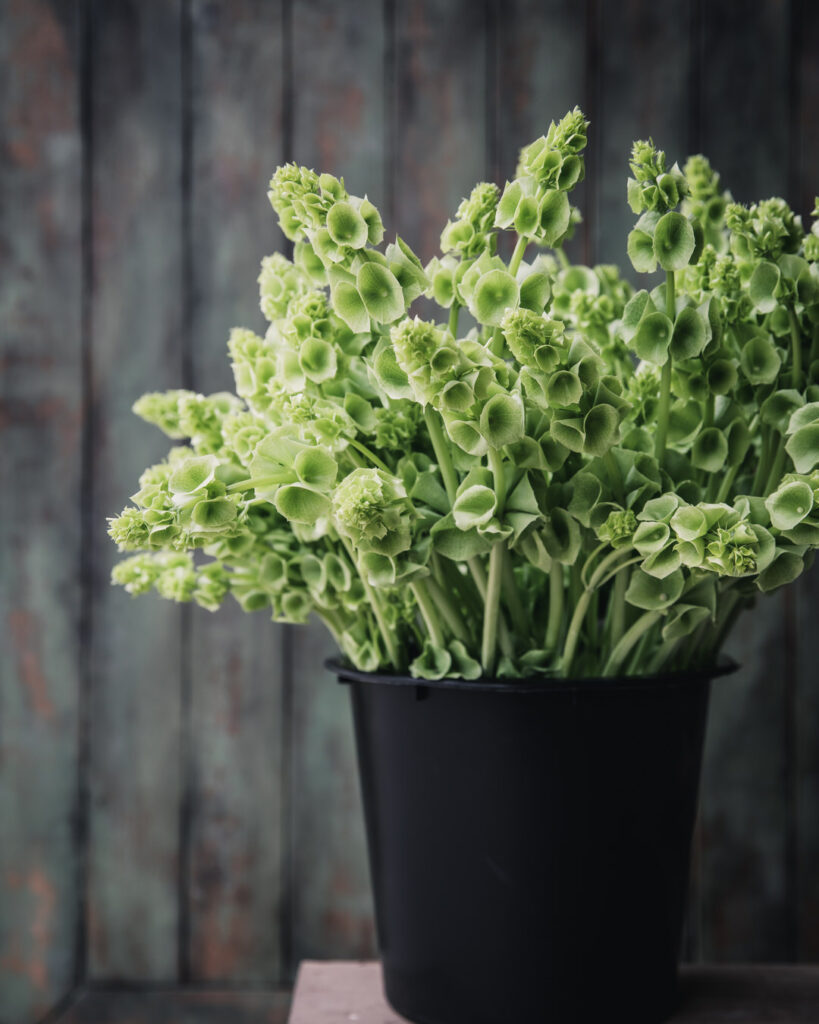
Environmental Factors: N&B
Bells of Ireland do best in areas with long, cool summers though they can be grown in a variety of conditions if started early enough. They do not like hot, humid conditions. They prefer well-drained soil and can be grown in sun or partial shade.
Environmental Factors: BTS
We do not have long, cool summers but still manage to grow decent Bells of Ireland. We primarily grow it in the early spring.
Transplanting, Spacing, Support: N&B
Bells of Ireland can be transplanted outdoors once nighttime temperatures are above 40F (UWM). Be gentle so as not to disturb the rootball. Transplant 6–12″ apart. Most sources recommend support netting. Ziegler notes that support is especially important if growing in the field because bells tend to accumulate rainwater, causing the stems to flop.
Transplanting, Spacing, Support: BTS
We transplant our Bells of Ireland at 6–9″ spacing (just depends what bed they’re going in but anecdotally I feel 9″ produces a better crop). I pretty much try and get away with not using netting whenever I can, so I do not use netting on my Bells of Ireland. So far so good, but they are in the tunnel which is somewhat protected from wind and rain. I may regret this at some point, but they are so prolific I don’t find this to be an issue.
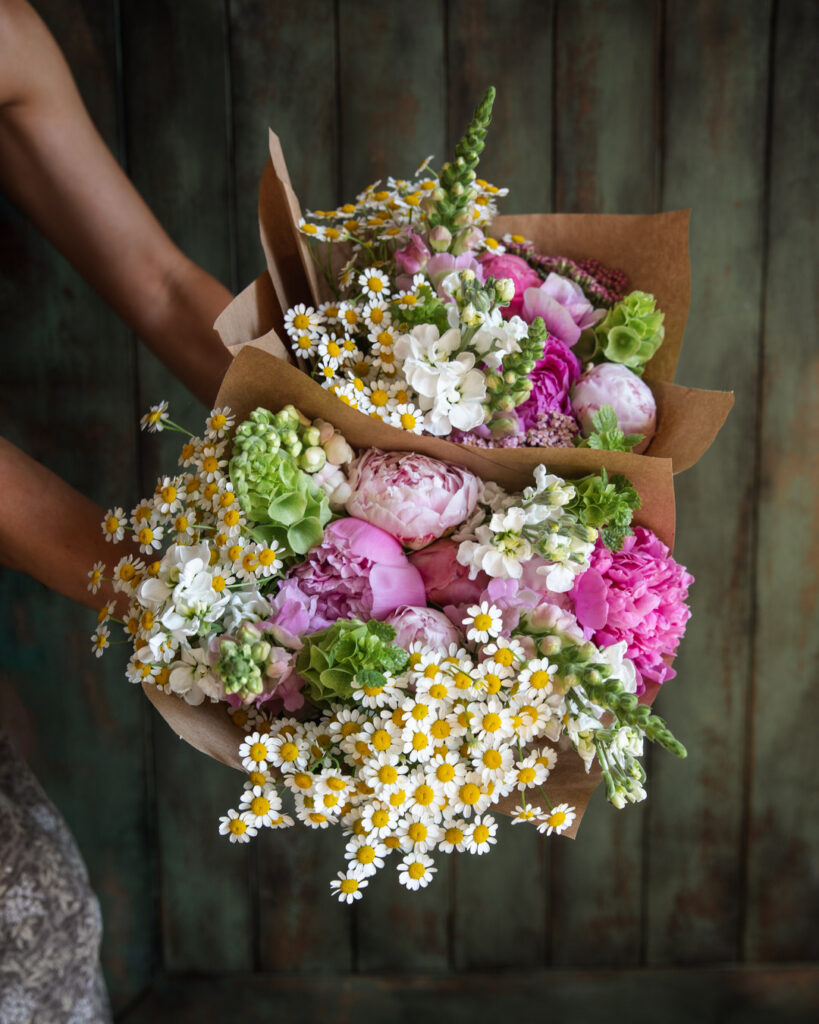
Successions: N&B
Depending on your geographical location, Bells of Ireland can be planted in successions if summers do not get too warm.
Successions: BTS
Because our summers get so hot, I only do one succession of Bells of Ireland, but find I can cut off of them for weeks (due to the side shoots maturing later).
Nutrition: N&B
All sources state that Bells of Ireland is easy to grow and requires average soil. Fertilize based on soil tests.
Nutrition: BTS
We fertilize our fields organically based on soil tests, and we do not fertilize for each crop individually. I have an eBook that outlines exactly how we do this. I’ve made that available for you here.
Drainage & Irrigation: N&B
If direct sowing, keep soil moist until germination. After germination, regular irrigation is ideal, but plants prefer well-draining soil as they can be prone to crown rot in super wet conditions.
Drainage & Irrigation: BTS
At our farm, we have gossil-loamy sand, meaning that our soil is more sand than loam. It actually drains excessively to the point of leaching nutrients. Our biggest difficulty is keep plants irrigated, especially in dry spells. For this reason, we do have drip irrigation installed on all of our beds at the home farm.
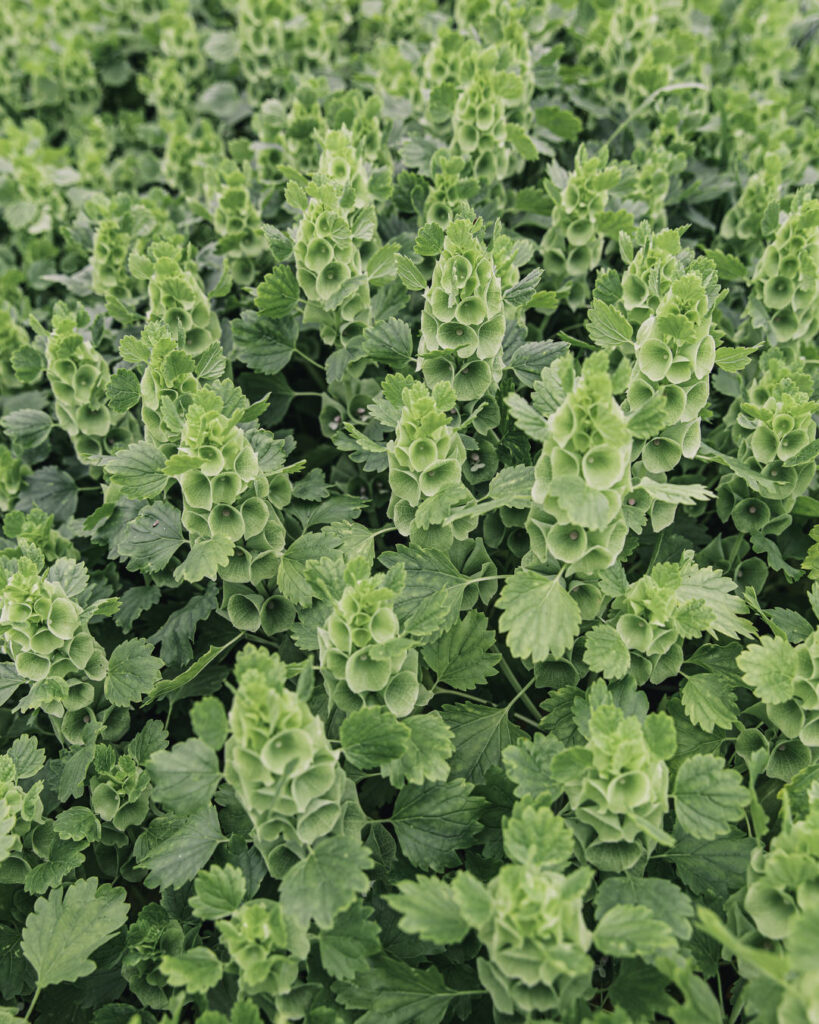
Pinching: N&B and BTS
Bells of Ireland do not need to be pinched and will grow lateral stems easily.
Bloom Period: N&B and BTS
Bells of Ireland mature in 90–110 days and their bloom period depends on geographical location and summer temperatures. We typically have Bells of Ireland during peony season, which times perfectly for mixed bouquets.
Overwintering: N&B and BTS
Bells of Ireland can be overwintered successfully in many regions. While Ziegler lists the winter low survival as 10F (–12C), Johnny’s reported 100% survival rate overwintered in their tunnel in Zone 5 Maine. While I have not tried overwintering Bells of Ireland, they can absolutely be winter sown here as we have volunteer plants all the time 🙂
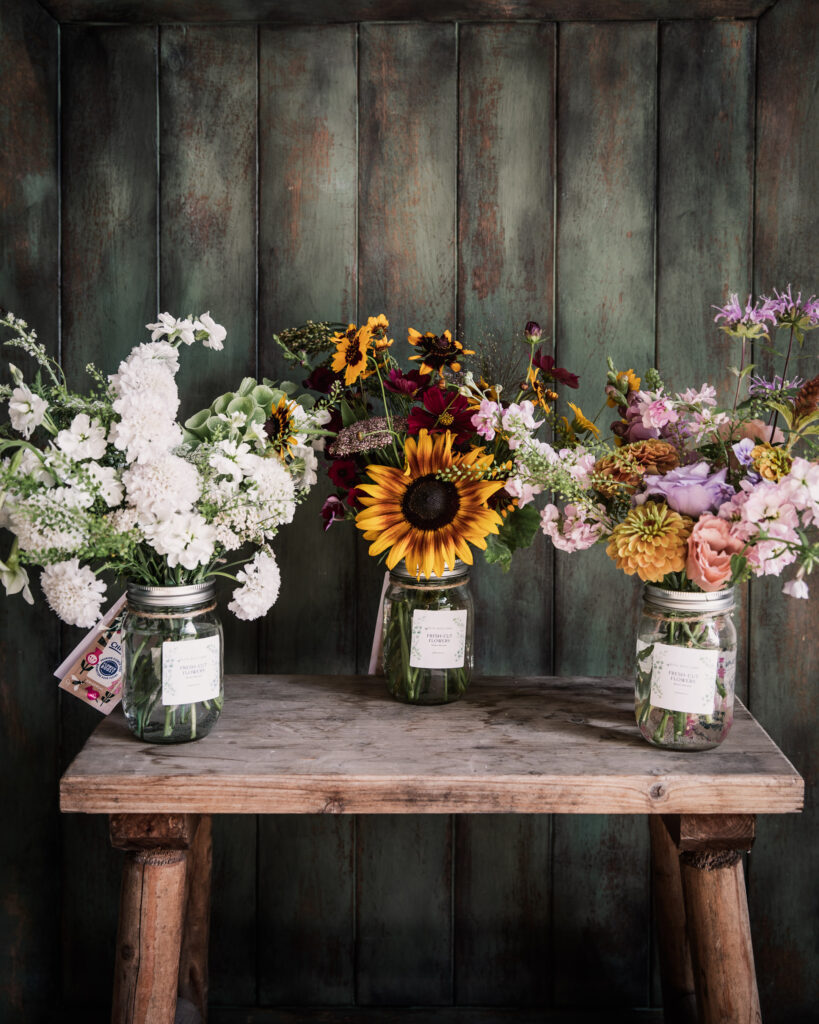
Harvest & Post-Harvest: N&B
Johnny’s recommends harvesting regularly to promote side shoots. Ziegler recommends harvesting before thorns develop. Postharvest recommends simply harvesting when long enough for intended use, but before oldest calyces discolor. For dried, harvest when bells have become hard to the touch.
Hydrating and holding solutions are recommended. Expected vase life is 8–10 days. In the cooler, Bells of Ireland can be held for up to 4 days at 36–41F (2–5C). Stems are geotropic and will bend if stored on their sides, so be sure to store upright.
Harvest & Post-Harvest: BTS
As noted above, I don’t find Bells of Ireland to be overly picky on when it is harvested. We pick for the week and store in our cooler for a few days at most, which is usually around 38F in spring.
Pests & Disease: N&B
Bells of Ireland are generally fuss free and especially pest resistant. However, some diseases include crown rot and leaf spot. For disease and pest control, see Johnny’s comparison chart.
Pests & Disease: BTS
While Bells of Ireland are generally fuss free, we do occasionally get leaf spot. It was the worst it’s ever been this year, but this could have been due to a late planting and higher humidity than normal. Ziegler notes that some years she also has this issue and just lets them go. That’s what we do too.
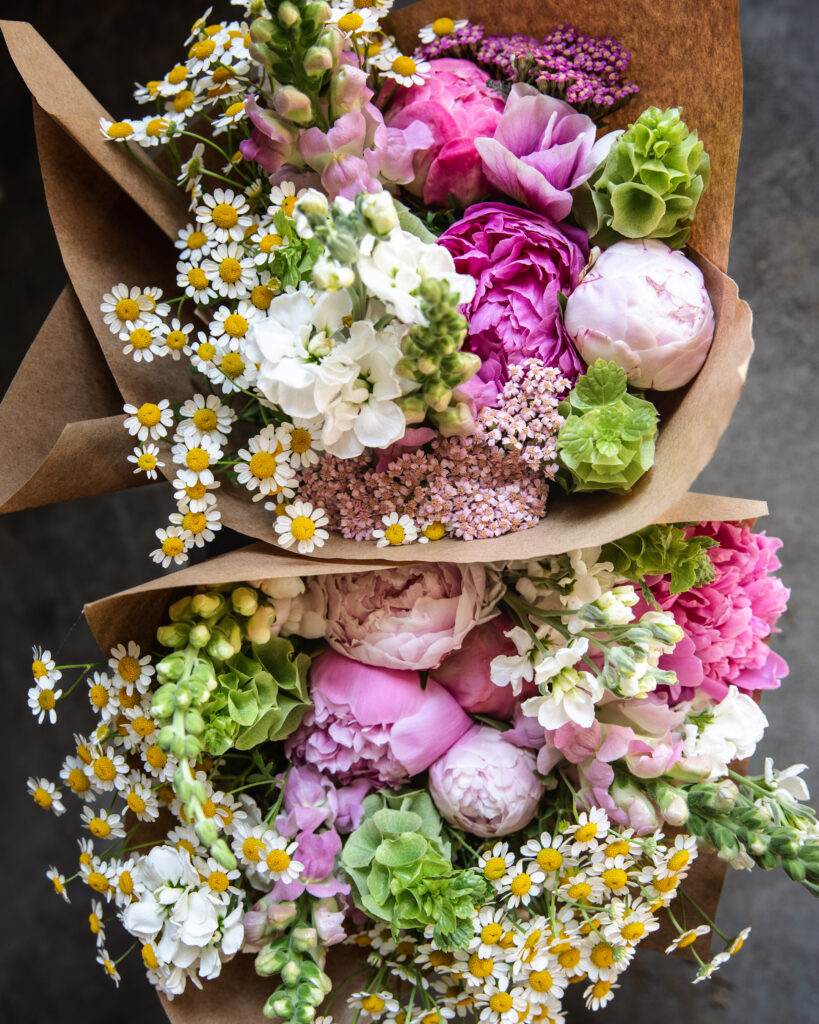
Variety Selection: N&B and BTS
Seed catalogs generally only have ‘Bells of Ireland’ listed, without a specific variety name. There is a variety called ‘Pixie Bells’ but it should be avoided because it’s short and for landscape. We get our seed from Johnny’s or Ball.
Pricing: N&B and BTS
BOSTON Ornamental Terminal Prices as of 26-DEC-2023:
BELLS OF IRELAND (MOLUCELLA): MARKET STEADY. per bunch CB long 10.00-12.50
mostly 12.50 few lower EC long 10.00
$12 is my florist price. I don’t typically sell Bells of Ireland by the bunch for retail as they are most often used in our mixed bouquets.
Design: BTS only
For whatever reason, I don’t tend to design with Bells of Ireland unless I get a specific request for them. They are almost exclusively used in our mixed bouquets (and mason jars).

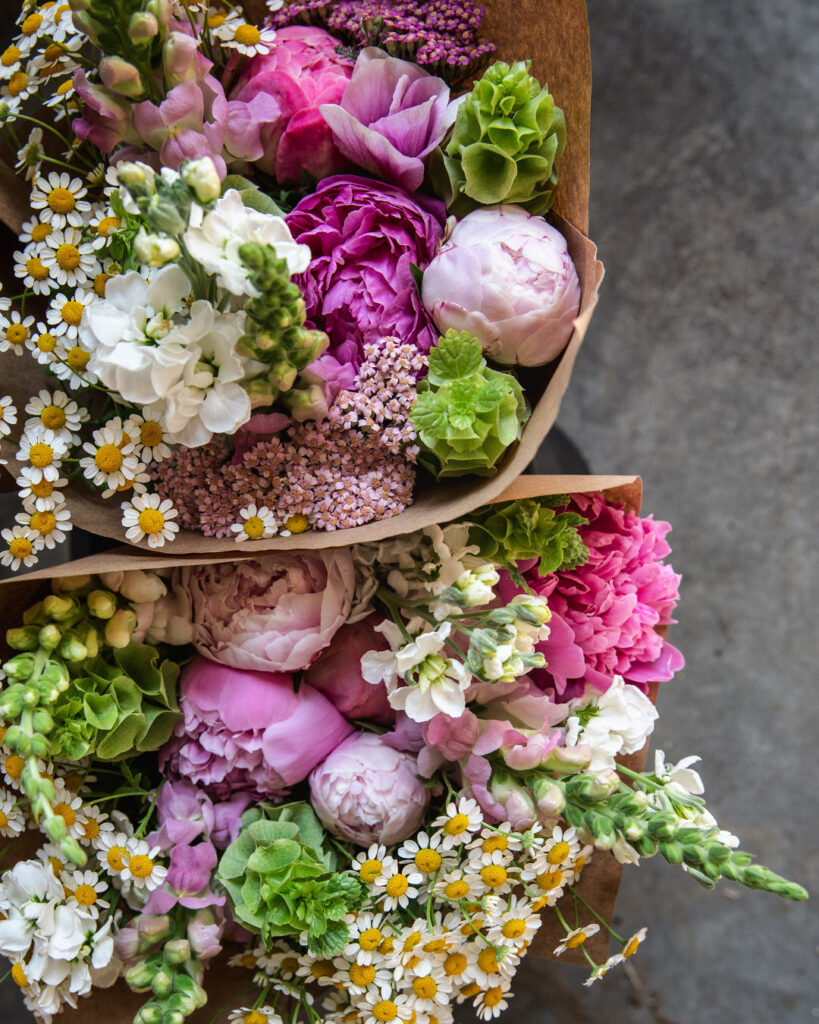
Wrap Up
OK, my friend, that is IT for this Plant Profile. What do you think? Did you find some useful nuggets? Be sure to save a PDF copy using the buttons below, so you can always refer back to it.
Have any questions or something you want to share with me or others? I know I say this ad nauseam, but I truly believe in the power of the collective and that we all have something unique and powerful to share, so please leave a question or share a comment below. We’re all better for it, and I thank you in advance!
Cheers pal!
cLICK FOR Comments +